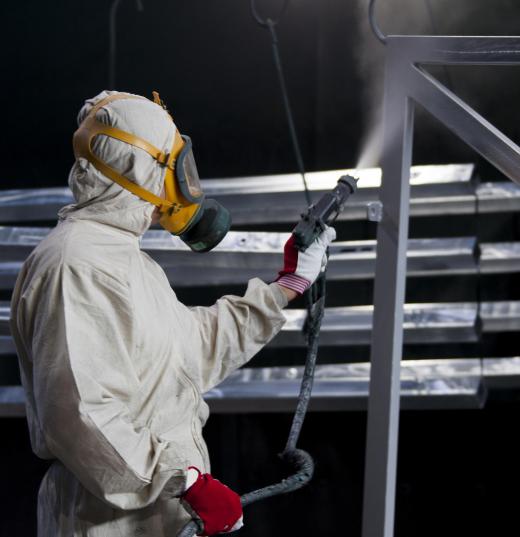Electrostatic painting is an innovative method used for painting metals and certain types of plastics. It makes use of electrically charged powders in order to create a sleek and smooth finish and other desired effects. An electrostatic field is responsible for making powder coating possible.
An electrostatic field is a phenomenon that resembles a typical magnetic field. For example, when a certain object becomes electrically charged, it automatically creates an electrostatic field. If that object has an excess in its number of electrons, it is then be considered to possess a negative charge. However, should the object have fewer electrons than its external environment, it is considered a positively charged object.

Just as with magnetic fields, two electrostatic objects with oppositely charged particles will automatically attract one another. This is the core idea of electrostatic painting, which harnesses these electrostatic fields in order to paint metal objects more quickly and cost efficiently. Cleanup is also a breeze.
Special tools are required for electrostatic painting. The tools must be used to take advantage of the attraction of the oppositely charged fields. Set-up for electrostatic painting is thus is a bit more complex then setup for standard painting, but the process is simple.

The first step of the process involves mixing formulated paint with a chemical catalyst to produce a positive charge. The metal object that needs to be painted will then be grounded through attached wiring. As the metal object and the formulated paint hold opposing charges- the paint is positive while the metal is negative- the paint easily becomes attracted to the metal object.
After the charging is finished, and the setup is done, the painting can take place. The paint with a positive charge is sprayed onto the metal object and grabs on easily to the metal’s surface. The attraction from the opposing charges is so strong that even if just one side of a metal pole is sprayed, the charge will automatically draw the paint around the metal, covering its entire surface.
The metal is then baked in ovens with temperatures up to 500°F, in order to achieve a hard finish. Electrostatic painting provides a very durable coating paint system for aluminum, architectural steel, race car frames, patio furniture, filing cabinets, door and window frames. The method can usually achieve a mirror-smooth finish without the runs, sags, bubbles, and drips that typically occur with traditional liquid painting methods.
The paint also generally proves to be more durable than other liquid paints plus. In addition, the process is an eco-friendly process since it does not use any solvents that can evaporate or contaminate drainage water. However, electrostatic painting can produce unpleasant odors and so it is recommended that painting is done outdoors.
